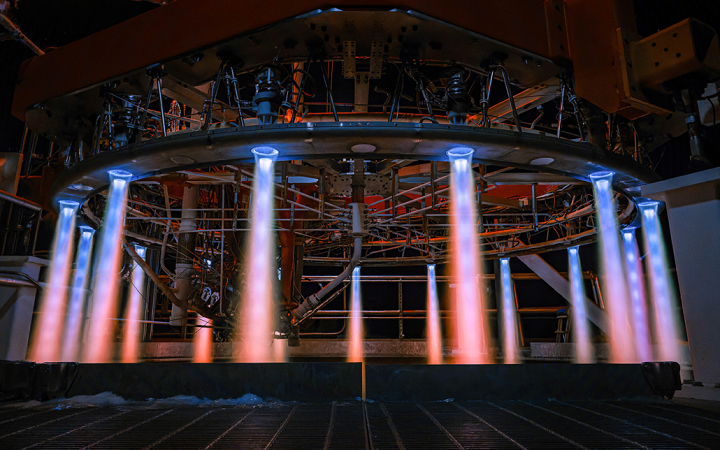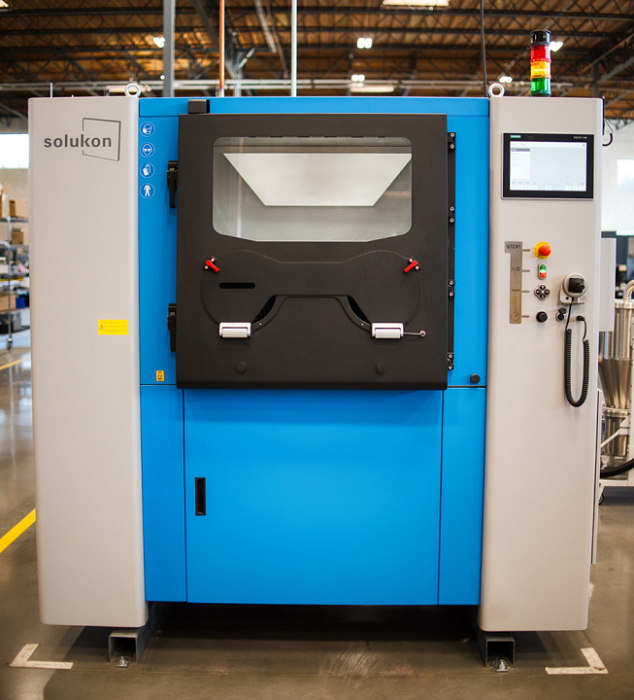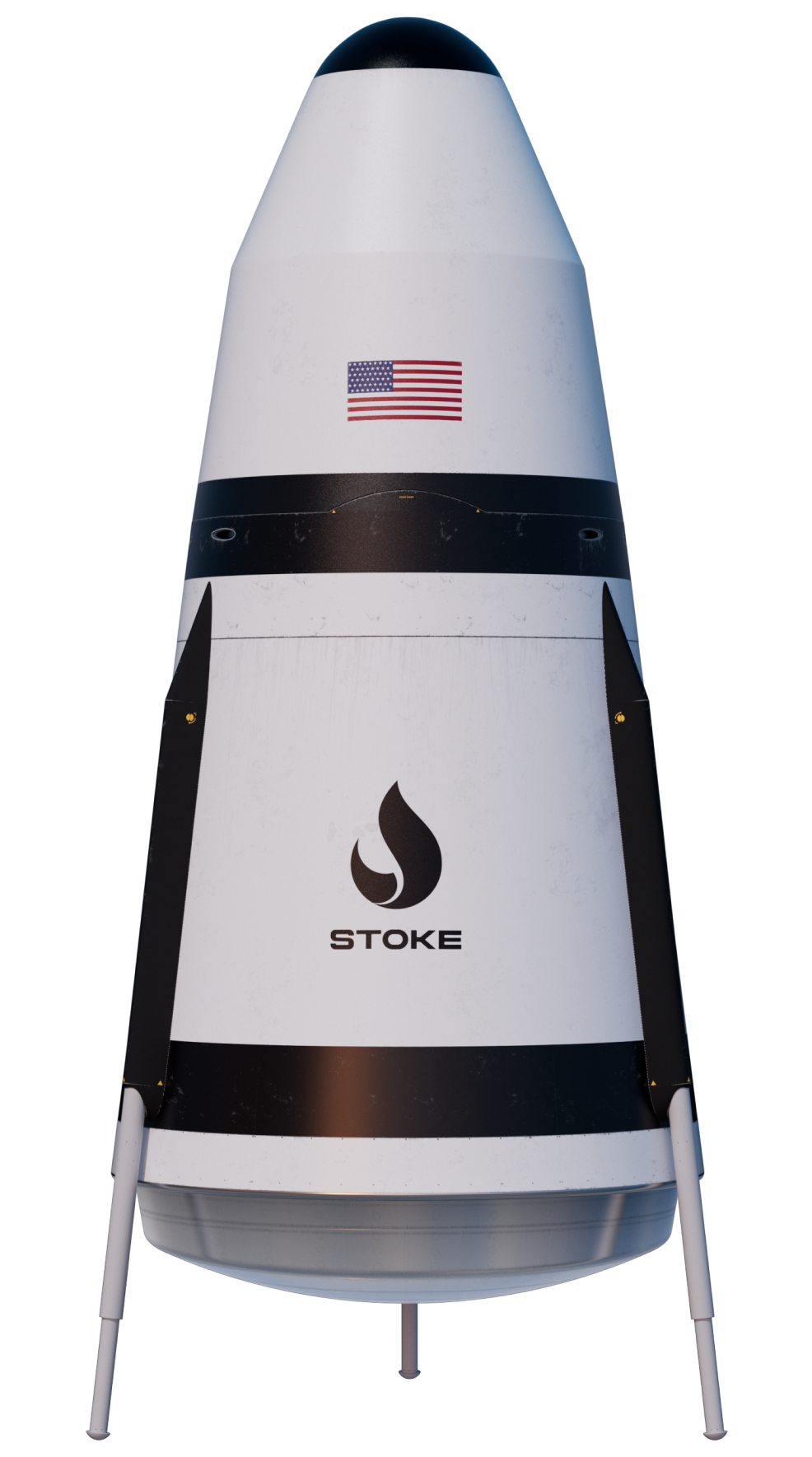The space industry continues to thrive with the help of additive manufacturing (AM), which, as AM Research says in its “3D Printing in Commercial Space” report, offers many advantages over traditional methods of manufacturing, including shorter lead times, weight and part count reduction, and design flexibility, and sustainability. U.S. space launch company Stoke Space, headquartered in Kent, Washington, wants to increase access to outer space, and is using 3D printing to build more efficient, rapidly reusable rockets to achieve this goal. But depowdering these rocket parts is a major challenge, which is why it’s using Smart Powder Recuperation (SPR) technology by Solukon.
Reusable rockets help speed up space travel, lower launch costs, and, as Stoke is well-aware, further open access to orbit.
“We’re revolutionizing access to space with 100% reusable rockets designed to fly daily,” the company states on its website. “Our singular focus on 100% reusability and ultra-high launch cadence drives every decision we make.”
Both the first and second stages of Stoke’s rocket are said to be fully reusable, and while this isn’t completely out of the ordinary for the first stage, the second stage is typically thrown away. Stoke’s second stage, designed for little refurbishment between space flights, features an actively cooled metallic reentry heat shield that’s strong, resilient, and operates with passive failure modes. That’s how it’s able reenter the Earth’s atmosphere and safely land after traveling to space and back.
Stoke designs and 3D prints its first and second stage engine thrust chambers in-house out of a special, highly conductive copper alloy, which increases reusability of its rocket. The chambers have complex inner structures and cavities, including built-in manifolds and regenerative cooling channels. These are extremely tough to depowder, and copper adds an extra layer (pun intended) of difficulty. Because it tends to stick and clump together within these tight channels, complete copper powder removal is not easy to achieve. That’s why Stoke acquired Solutkon’s flagship machine for depowdering: the SFM-AT800-S.
“We chose Solukon for their industry leading capability in automating depowdering of complex parts. Regeneratively cooled rocket engine thrust chambers are notoriously difficult to depowder, and we wanted to ensure we had a robust machine to reliably depowder these difficult copper components,” said Zach Sander, Head of Engine and Fluid Systems at Stoke Space.”
Developed by Siemens and post processing solutions specialist Solukon, the SFM-AT800-S was launched at formnext in 2018. This automated powder removal system for metal powder bed fusion (PBF) is based on Solukon’s SPR technology, efficiently depowdering parts up to 600 x 600 x 600 mm and 300 kg. While it’s not Solukon’s largest powder removal system, the SFM-AT800-S is a great solution for more challenging parts, like heat exchangers and aircraft engine actuators. Featuring unlimited two-axis rotation and targeted vibration in a protected atmosphere, the system automatically gets unfused powder out of the printed parts.
For the toughest cases with hard-to-access geometries and internal channels, it’s possible to further optimize depowdering by analyzing a part’s CAD file. That’s where Solukon’s intelligent depowdering software comes in.
Andreas Hartmann, CEO and CTO of Solukon, said, “SPR-Pathfinder® is a convenient tool to optimize the depowdering before it even started.”
SPR-Pathfinder works with a part’s digital twin to automatically calculate the motion sequence most ideal for removing the powder. Then, the SFM-AT800-S reads the sequence, programs it, and executes it for automated, residual-free powder removal from complex structures.
Another powder removal tool that’s especially helpful for these reusable rocket engine thrust chambers is a high-frequency knocker. Stoke chose this add-on for its Solukon system to help loosen up any copper powder trapped in the internal channels of its parts. The company also connects an ultrasonic vibration system directly to the component to help increase the flow of powder as well.
All images courtesy of Solukon unless otherwise noted.
Subscribe to Our Email Newsletter
Stay up-to-date on all the latest news from the 3D printing industry and receive information and offers from third party vendors.
You May Also Like
Gorilla Sports GE’s First 3D Printed Titanium Cast
How do you help a gorilla with a broken arm? Sounds like the start of a bad joke a zookeeper might tell, but it’s an actual dilemma recently faced by...
Nylon 3D Printed Parts Made More Functional with Coatings & Colors
Parts 3D printed from polyamide (PA, Nylon) 12 using powder bed fusion (PBF) are a mainstay in the additive manufacturing (AM) industry. While post-finishing processes have improved the porosity of...
$25M to Back Sintavia’s Largest Expansion of Metal 3D Printing Capacity Since 2019
Sintavia, the digital manufacturing company specializing in mission-critical parts for strategic sectors, announced a $25 million investment to increase its production capacity, the largest expansion to its operations since 2019....
Velo3D Initiates Public Offering in a Bid to Strengthen Financial Foundations and Drive Future Growth
Velo3D (NYSE: VLD) has been among a number of publicly traded 3D printing firms that have attempted to weather the current macroeconomic climate. After posting a challenging financial report for 2023,...


































